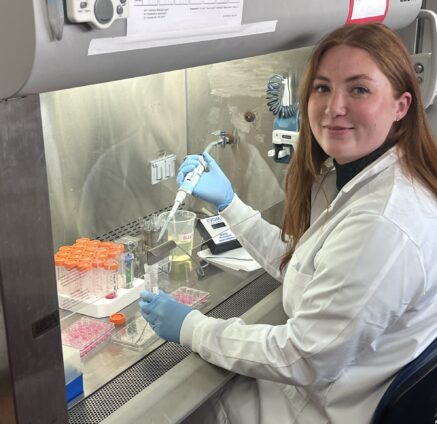Q&A with Dr. Marcus Garcia: Measuring Microplastics in the Placenta and Assessing Their Health Impacts
September 25, 2024PhF awardee Dr. Marcus Garcia, a postdoctoral trainee at the University of New Mexico, has developed a method to measure the amount of microplastics in tissue and is studying the amount of microplastics in the placenta and their health impacts.
You’ve probably seen it on TV or in the news: Images of sea animals swimming in an ocean filled with plastic bottles and other plastic waste. A voiceover or text describing the negative health effects on animals and their habitat. But what about the health effects on humans?
These plastics break down into tiny particles less than 5 millimeters in size — smaller than the width of a pencil eraser — and make their way into human bodies, often through our food and drink. The amount of these microplastics in our environment is doubling about every 12 years.
Marcus A. Garcia, PharmD, a postdoctoral trainee at the University of New Mexico, received a 2024 PhRMA Foundation Postdoctoral Fellowship in Translational Medicine for his work to measure the amount of microplastics found in the placenta, study how they reached the placenta, and assess their potential impact on maternal health and fetal development.
Garcia developed a method to measure plastic content in the placenta, with initial findings showing an average of 130 micrograms of microplastics per gram of placental tissue. His data also suggest that higher plastic levels in the placenta are linked to lower APGAR scores, a system used to assess newborn health, indicating potential health impacts.
Watch this video to learn more about Garcia and his pioneering research.
Learn more about the PhRMA Foundation’s fellowship and grant opportunities. Check out more researcher stories on our blog.

